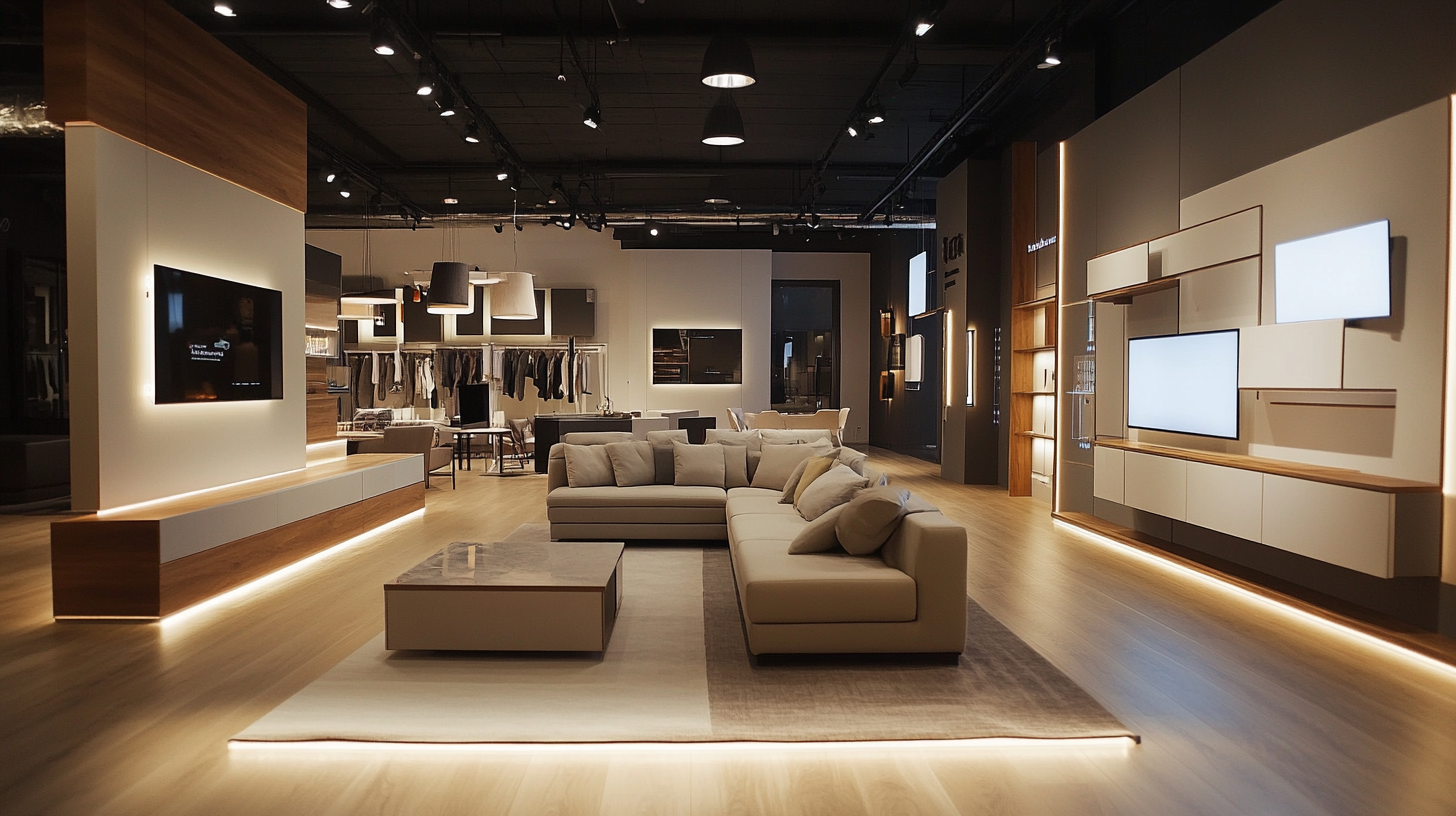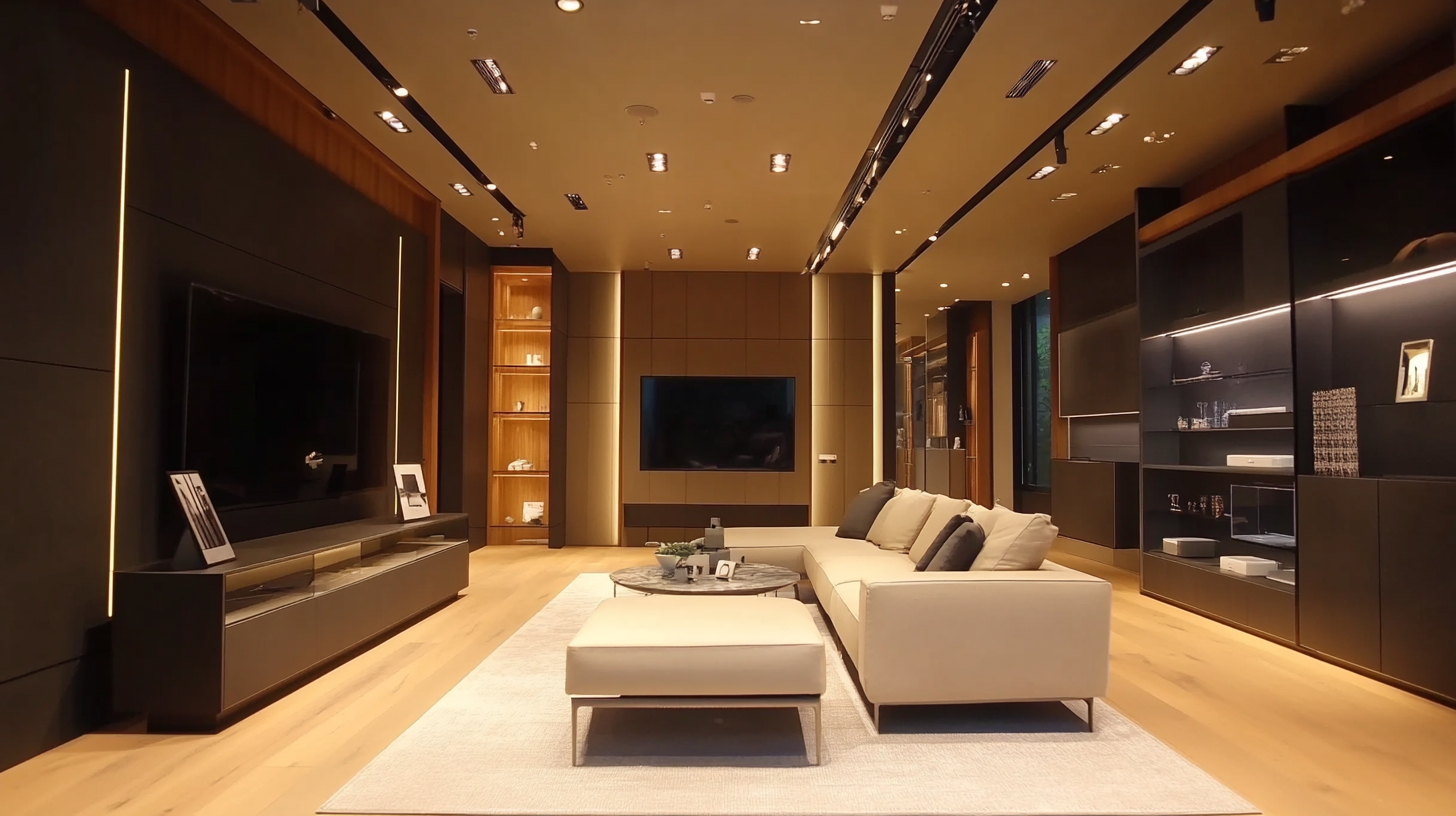Essential Tips for Optimizing Showroom Lighting for Global Buyers
In the competitive landscape of retail, effective showroom lighting plays a crucial role in shaping consumer perceptions and enhancing product appeal. According to a recent report by the American Society of Interior Designers, over 80% of shoppers say that lighting significantly influences their purchasing decisions. With global buyers increasingly seeking immersive and engaging shopping experiences, optimizing showroom lighting has never been more essential. The right lighting not only highlights products but also sets the mood and creates a welcoming atmosphere that encourages exploration and interaction.
Furthermore, the International Association of Lighting Designers highlights that well-designed lighting can boost sales by up to 30%. This speaks volumes about the importance of strategic lighting choices that cater to various product types and target audiences. As businesses aim to attract international clientele, understanding the nuances of showroom lighting becomes paramount. Tailoring your lighting strategy to effectively showcase your offerings can create a memorable shopping experience and drive global buyer engagement.

Strategies for Selecting the Right Lighting Fixtures to Enhance Showroom Appeal
When it comes to enhancing showroom appeal, the selection of the right lighting fixtures plays a crucial role. According to a report by the American Society of Interior Designers (ASID), effective lighting can increase the perceived value of a product by as much as 30%. This demonstrates that the right ambiance not only attracts customers but also encourages them to invest more in their purchases. When choosing lighting fixtures, consider the color temperature; a study from the International Association of Lighting Designers (IALD) suggests that warm white (2700K-3000K) can create a welcoming atmosphere that encourages longer customer visits. Additionally, accent lighting can be used strategically to highlight key products. For instance, focused spotlights on featured items can increase their visibility and desirability, which research by IKEA indicates can lead to a 20% increase in sales for highlighted products. Furthermore, it's essential to incorporate energy-efficient solutions like LED lighting. The U.S. Department of Energy reports that LED lights use up to 75% less energy than incandescent bulbs, translating into cost savings and a reduced carbon footprint. This combination of sustainability and aesthetics is not only appealing to environmentally conscious consumers but also enhances the overall design of the showroom. Thus, selecting the right lighting fixtures is not just about illumination; it's about creating an engaging shopping experience that aligns with modern consumer values.

The Impact of Color Temperature on Product Presentation
The impact of color temperature on product presentation is a crucial aspect for retailers looking to optimize showroom lighting for global buyers. Different color temperatures can evoke distinct emotional responses and perceptions of products. For instance, studies show that a color temperature ranging from 3000K to 4000K creates a warm and inviting atmosphere, enhancing the visual appeal of products. This range is critical for sectors such as fashion and home décor, where the ambiance can significantly influence customer purchasing decisions.
Incorporating warmer light can also enhance the perceived color accuracy and vibrancy of certain products, making them more attractive to potential buyers. According to the International Color Consortium, proper lighting can improve product visibility by 30% to 50%, allowing customers to better appreciate the details and quality of the items. Additionally, research published by the Lighting Research Center indicates that optimal lighting increases customer dwell time, further elevating the chances of conversion.
Furthermore, aligning showroom lighting strategies with environmental initiatives, such as utilizing lighter shades for ceilings and walls, can contribute to a more sustainable exhibit. These techniques can help reduce ambient temperature by minimizing energy consumption and creating a more comfortable shopping experience. As demonstrated by recent studies from Australian universities, making intentional decisions about color temperature and lighting design can yield not only aesthetic benefits but environmental advantages as well.

Techniques for Layering Light to Create Dynamic Showroom Environments
Creating a dynamic showroom environment is crucial for capturing the attention of global buyers, and effective lighting plays a key role in this process. According to a report by the American Society of Interior Designers (ASID), well-planned lighting can increase merchandise sales by up to 30%. Layering light through various techniques not only enhances the aesthetic appeal of the space but also influences buyer behavior and decision-making.
One effective way to layer light is through the combination of ambient, task, and accent lighting. Ambient lighting provides general illumination that sets the overall tone of the showroom, while task lighting focuses on specific areas where detailed work or examination occurs. Accent lighting, on the other hand, draws attention to featured products or displays, creating highlights that entice buyers. A study published in the Journal of Retailing found that products illuminated with focused accent lighting experienced a 40% increase in perceived value, significantly impacting purchase intent.
Furthermore, integrating adjustable LED fixtures allows for greater flexibility in lighting schemes. Not only do LEDs consume 75% less energy than traditional incandescent bulbs, according to the U.S. Department of Energy, but they also offer a range of color temperatures that can shift the ambiance throughout the day. By manipulating the color and intensity of lighting, showroom managers can create different atmospheres, aligning with various buyer demographics and preferences. This adaptability not only enhances the shopper's experience but also promotes a more engaging and inviting atmosphere.

Utilizing Natural Light to Boost Energy Efficiency and Aesthetics
Utilizing natural light in showrooms can dramatically enhance the overall environment, creating an inviting space that resonates with global buyers. By incorporating large windows and skylights, showroom designers can harness sunlight, which not only illuminates the space but also reduces reliance on artificial lighting. This strategy not only cuts energy costs but also aligns with the increasing demand for sustainable practices in design.
In addition to energy efficiency, natural light offers a unique aesthetic appeal. Sunlight can highlight features and products more effectively than artificial sources, allowing colors and textures to appear more vibrant. Showrooms that embrace this element often find that their displays come to life, enhancing the shopping experience for potential customers. Furthermore, the ambiance created by natural light can positively influence consumer behavior, leading to longer visits and higher conversion rates.
To optimize natural lighting, careful consideration of the showroom layout is essential. Using reflective surfaces, such as mirrors or strategically placed light-colored walls, can amplify the sunlight entering the space. Additionally, integrating plant life can soften harsh light while bringing a touch of nature indoors, appealing to buyers' senses and creating a more immersive experience. By focusing on these aspects, businesses can create a stunning showroom atmosphere that not only attracts buyers but also fosters a sense of comfort and connection.
Essential Maintenance Tips for Sustaining Optimal Showroom Lighting Conditions
When it comes to showroom lighting, maintaining optimal conditions is crucial for showcasing products effectively, particularly for global buyers. A well-lit environment not only enhances the aesthetics but also impacts customer perception and decision-making. Industry reports suggest that about 70% of purchasing decisions are influenced by visual elements, highlighting the importance of implementing effective lighting strategies in showrooms.
To sustain optimal lighting conditions, regular maintenance is vital. This includes cleaning fixtures and replacing burnt-out bulbs to ensure consistency in brightness and color temperature. A study noted that improper lighting can lead to a decrease in sales by as much as 30%. Additionally, utilizing dimmers and adjustable fixtures allows for flexibility in ambiance, catering to diverse buyer preferences. Incorporating energy-efficient lighting solutions can further reduce maintenance costs while providing consistent illumination over time.
Moreover, like maintaining leather shoes or setting up a home gaming environment, lighting maintenance requires the right tools and knowledge. Regular inspections, along with the use of light meters to measure intensity and color quality, can help identify areas needing attention. By prioritizing these maintenance strategies, showrooms can create a welcoming atmosphere that not only attracts but also retains global buyers, ultimately driving sales growth.

